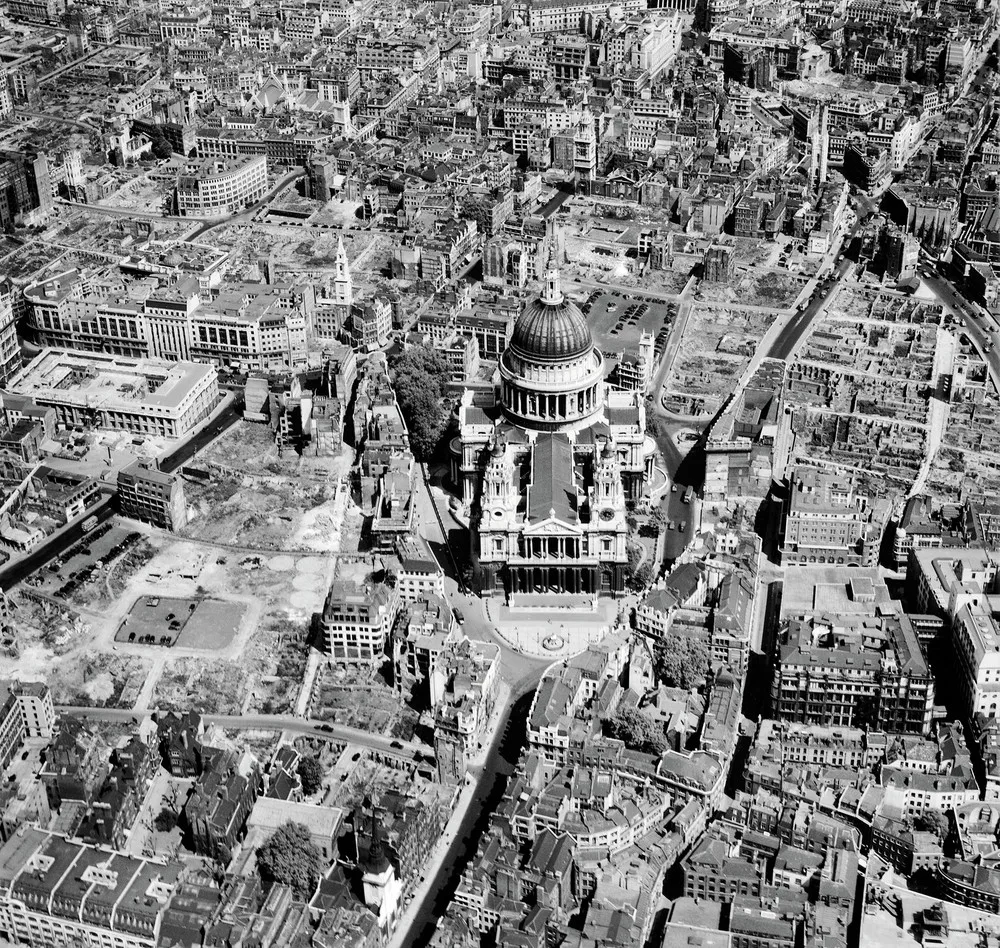|
St Pauls Cathedral sits seemingly untouched at the centre of a scene of urban devastation. At the height of the Blitz, Londons largest religious monument was transformed into a symbol of resolve, resilience and hope. Winston Churchill was keenly aware of the role that Christopher Wrens Renaissance masterpiece could play in maintaining national morale and pride, and he issued the order that the cathedral must be preserved at all costs. Patrols monitored the building day and night, with fire fighters on constant standby. Despite mass incendiary bombing raids on central London including an attack on the night of 29 September 1940, which saw the lead in the roof of the Cathedrals dome begin to melt after a direct hit St Pauls remained standing. The media used imagery of the building as potent propaganda, with the famous BBC war correspondent Ernie Pyle going as far as describing it as a picture of some miraculous figure that appears before peace-hungry soldiers on a battlefield. Pyle used the buildings survival to allude rather neatly to a collective spirit of fortitude: St Pauls was surrounded by fire, but it came through. This symbolism remained just as important after the War. In this photograph from 2 June 1947, Aerofilms captured a perfect image of the cathedral as a source of inspiration to begin the rebuilding process both in London, and in Britain as a whole. 1947. (Photo by US National Archives via “A History of Britain From Above”)
|

